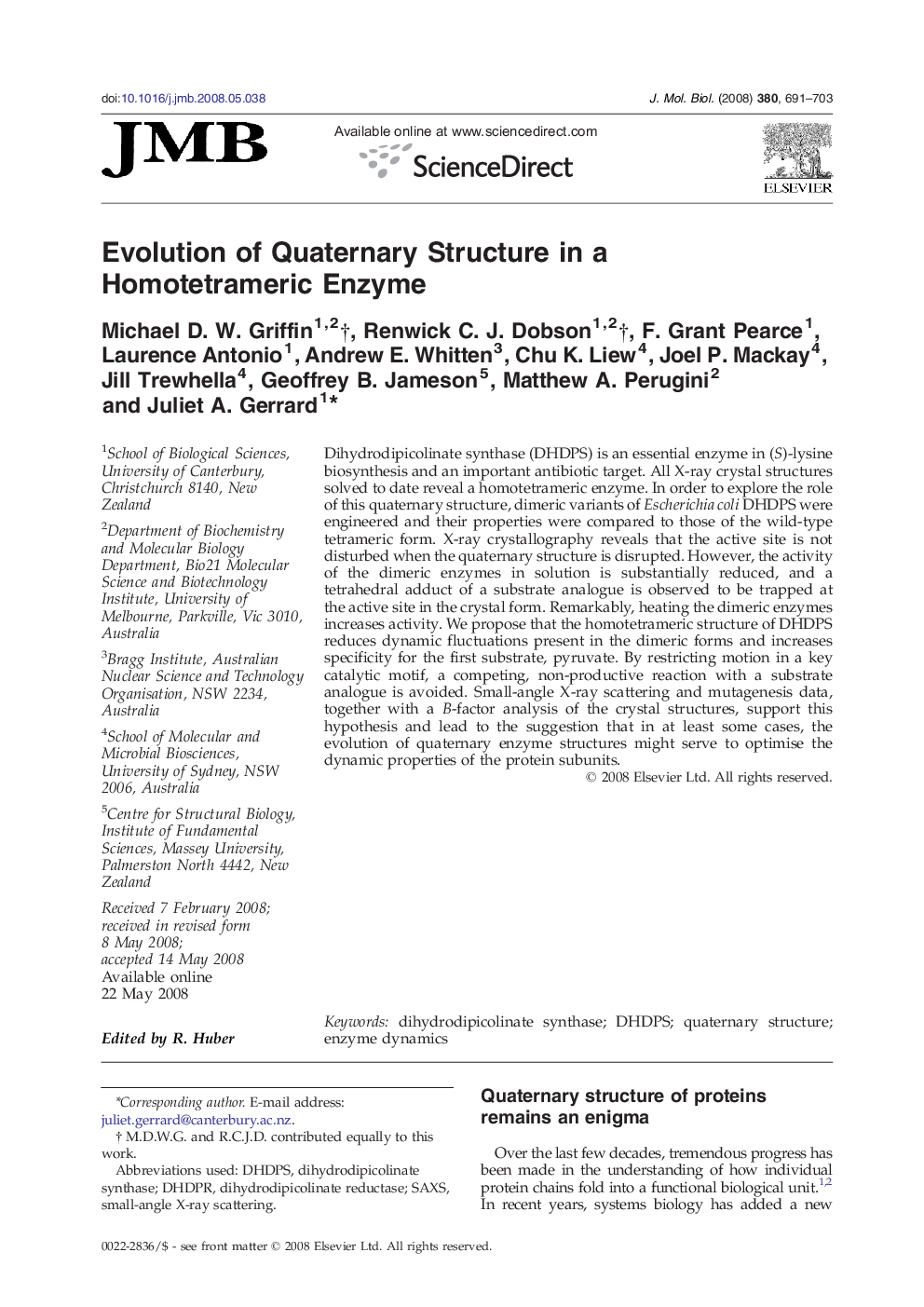| Article ID | Journal | Published Year | Pages | File Type |
|---|---|---|---|---|
| 2187348 | Journal of Molecular Biology | 2008 | 13 Pages |
Dihydrodipicolinate synthase (DHDPS) is an essential enzyme in (S)-lysine biosynthesis and an important antibiotic target. All X-ray crystal structures solved to date reveal a homotetrameric enzyme. In order to explore the role of this quaternary structure, dimeric variants of Escherichia coli DHDPS were engineered and their properties were compared to those of the wild-type tetrameric form. X-ray crystallography reveals that the active site is not disturbed when the quaternary structure is disrupted. However, the activity of the dimeric enzymes in solution is substantially reduced, and a tetrahedral adduct of a substrate analogue is observed to be trapped at the active site in the crystal form. Remarkably, heating the dimeric enzymes increases activity. We propose that the homotetrameric structure of DHDPS reduces dynamic fluctuations present in the dimeric forms and increases specificity for the first substrate, pyruvate. By restricting motion in a key catalytic motif, a competing, non-productive reaction with a substrate analogue is avoided. Small-angle X-ray scattering and mutagenesis data, together with a B-factor analysis of the crystal structures, support this hypothesis and lead to the suggestion that in at least some cases, the evolution of quaternary enzyme structures might serve to optimise the dynamic properties of the protein subunits.
